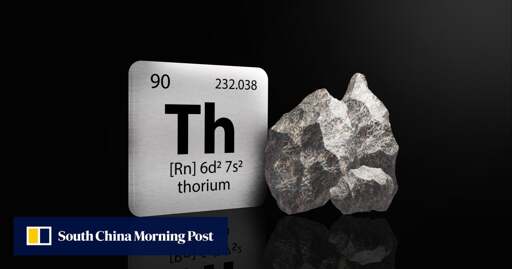It marks the first long-term, stable operation of the technology, putting China at the forefront of a global race to harness thorium – considered a safer and more abundant alternative to uranium – for nuclear power.
The experimental reactor, located in the Gobi Desert in China’s west, uses molten salt as the fuel carrier and coolant, and thorium – a radioactive element abundant in the Earth’s crust – as the fuel source. The reactor is reportedly designed to sustainably generate 2 megawatts of thermal power.



From what I’ve watched & read, it’s usually depicted as the freeze plug melts and the liquid salt flows into multiple small holding tanks below it. That way the fuel mass will be physically separated, which helps stop fission on top of any other mitigations like lining the containers with neutron absorbers, etc.
It’s that thorium is not fissile it’s fertile so separating the thorium from the uranium core prevents more thorium from absorbing neutrons.